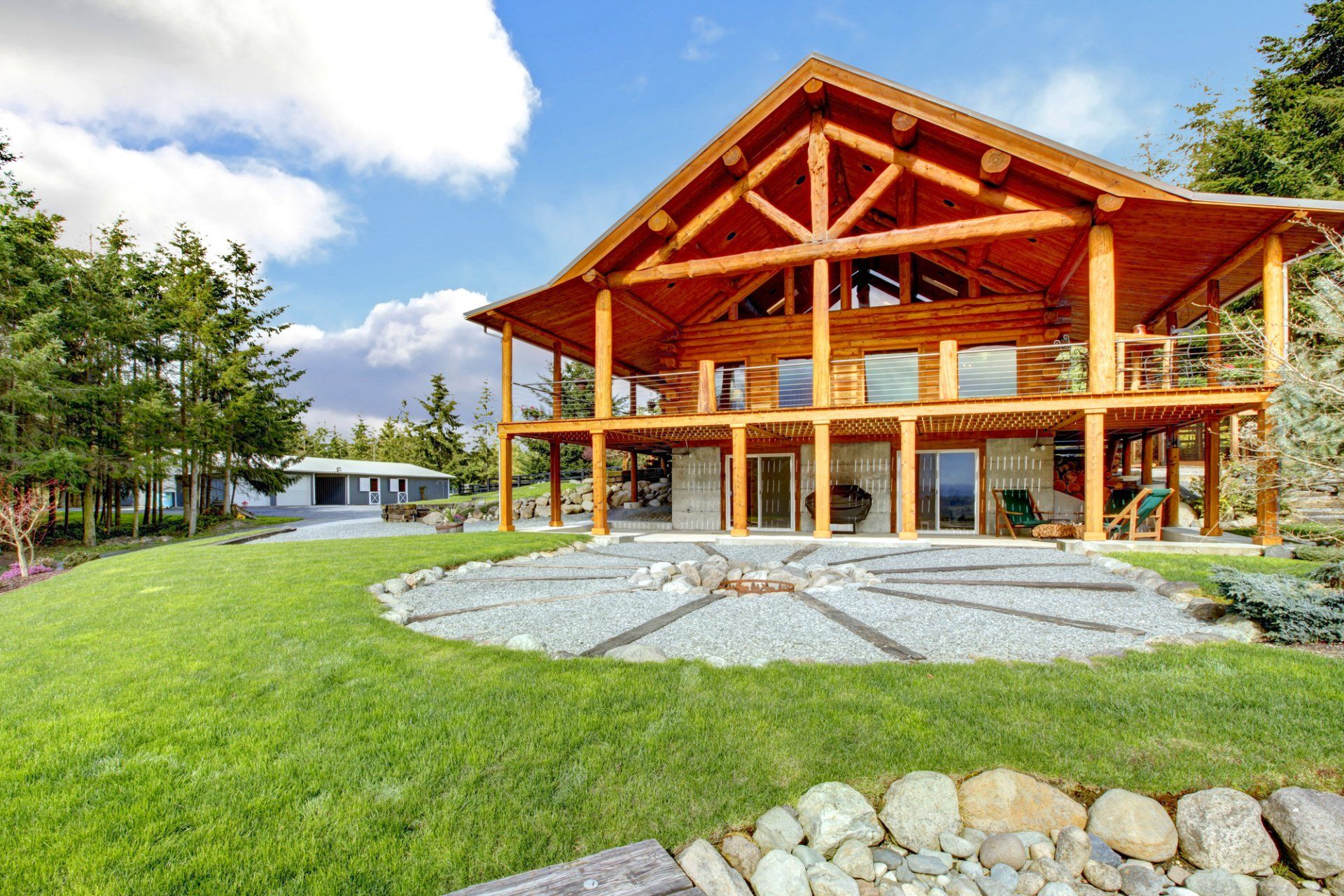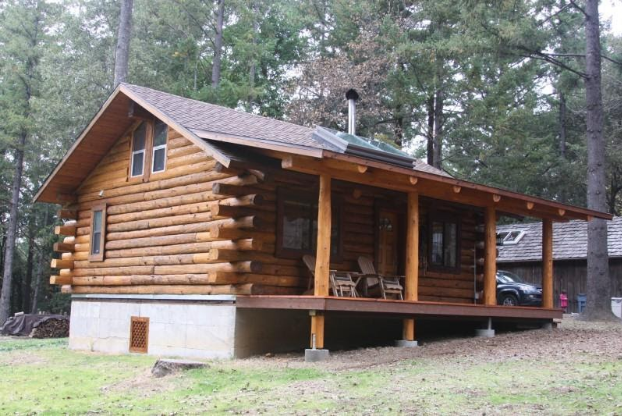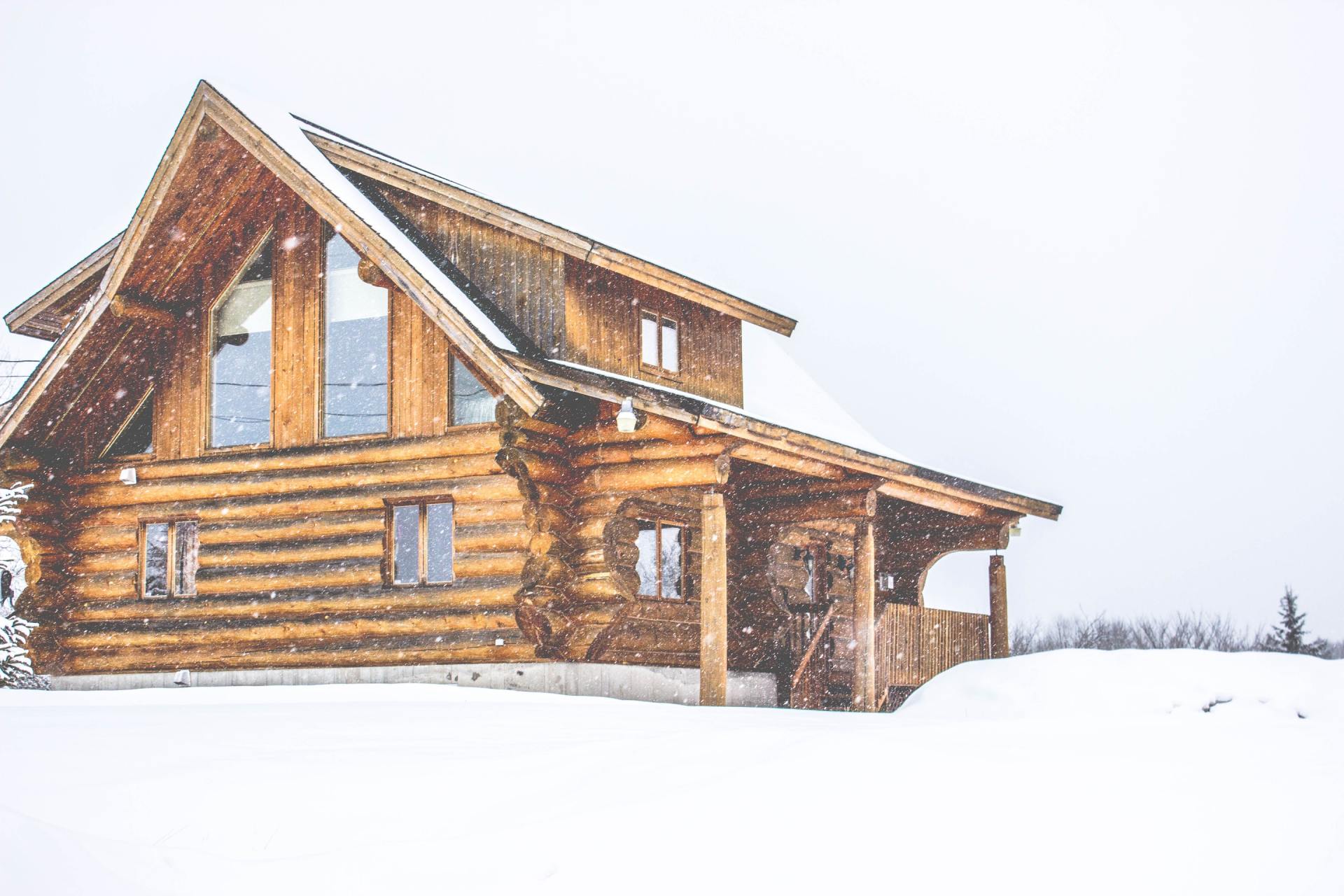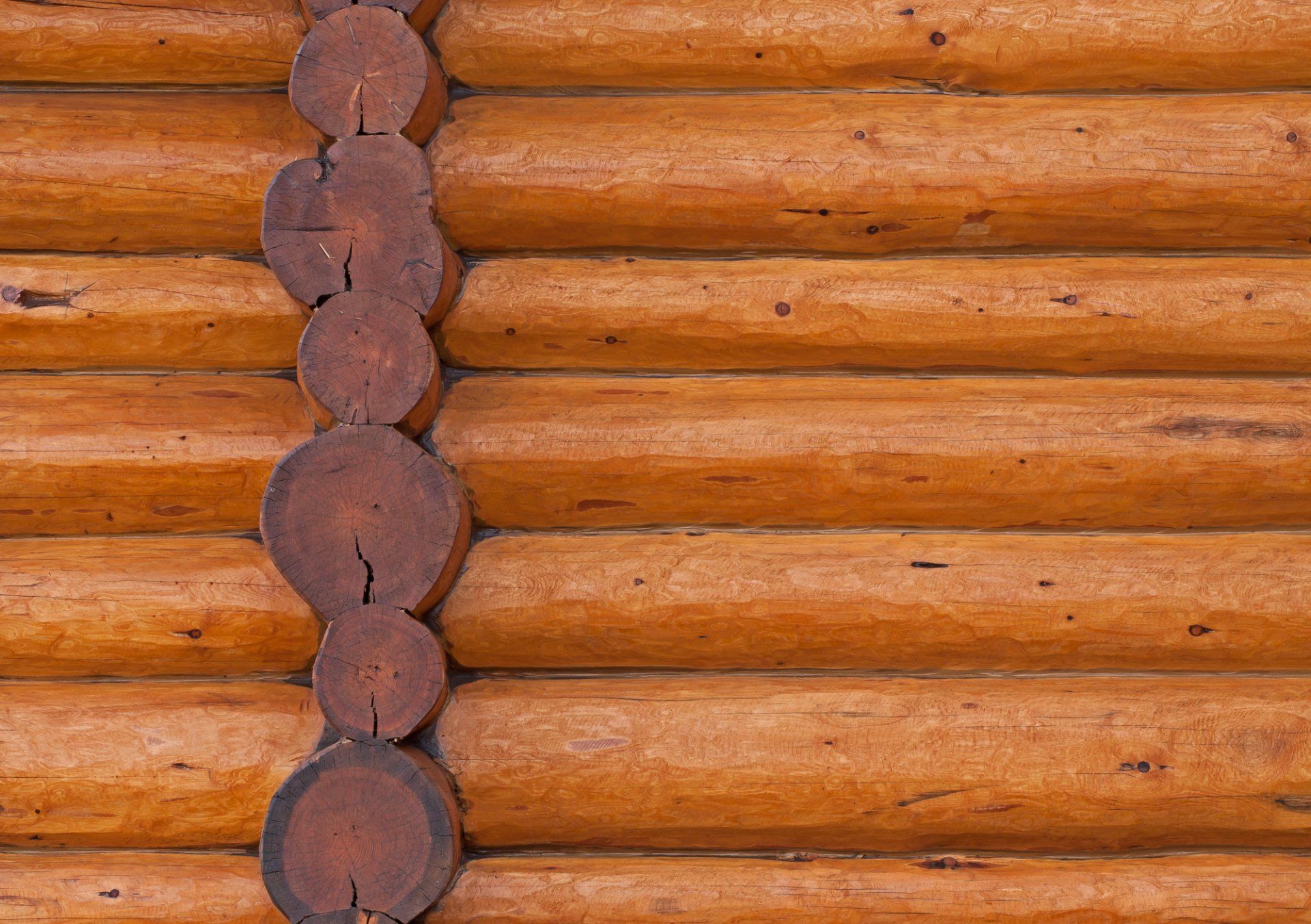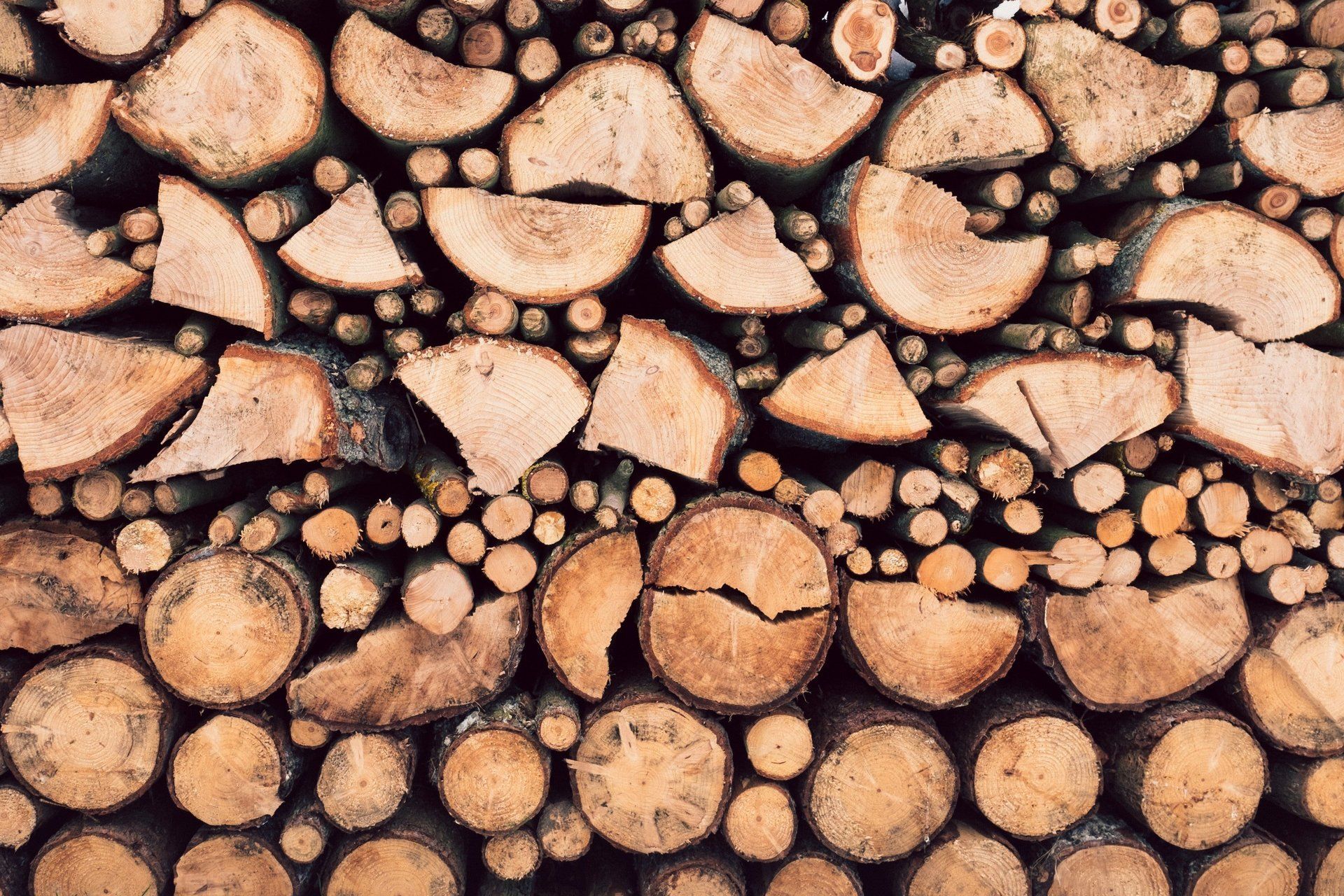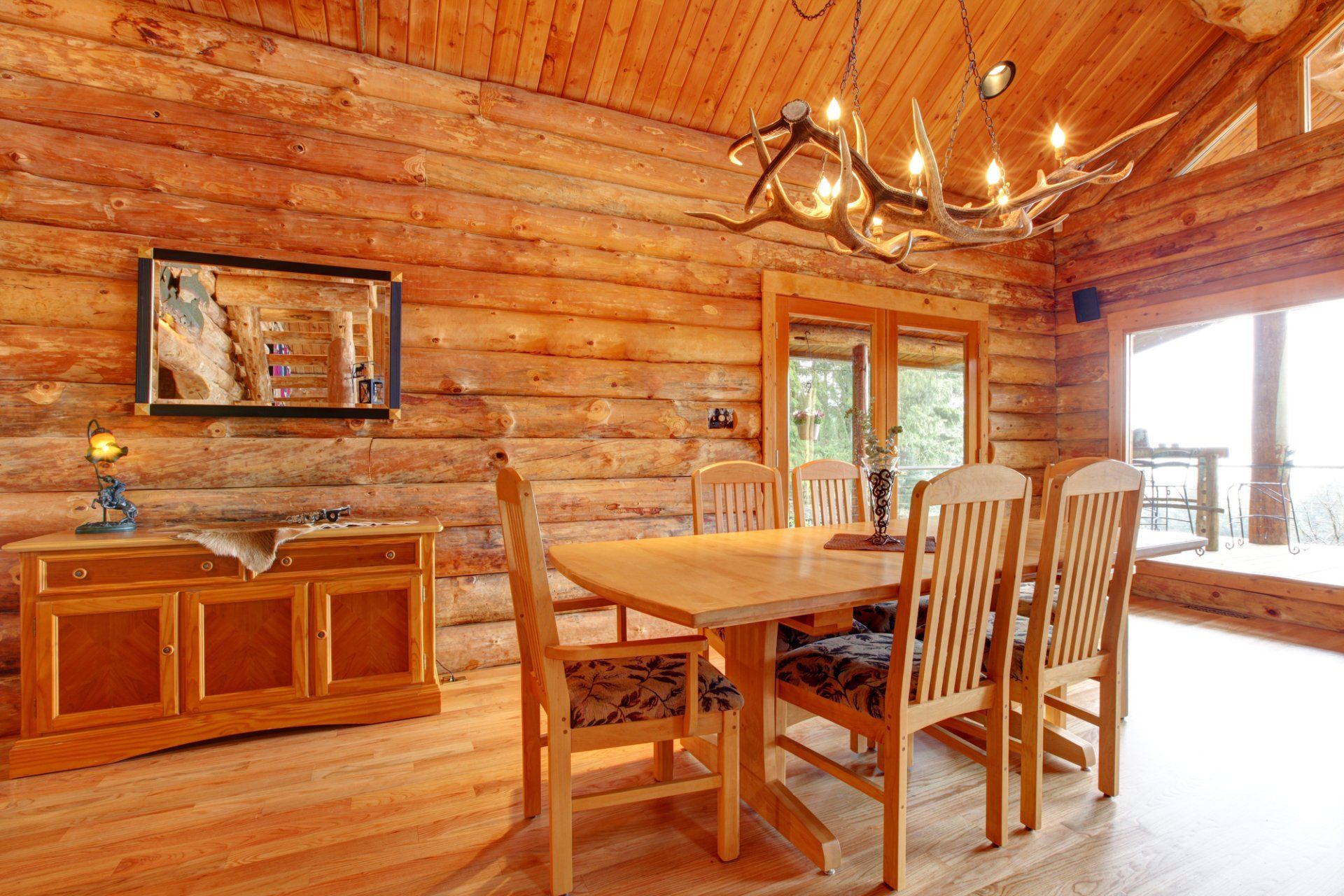Log Home Maintenance Plans (Long Term)
Inspect, Wash, Stain, Seal, Pest, Maintain
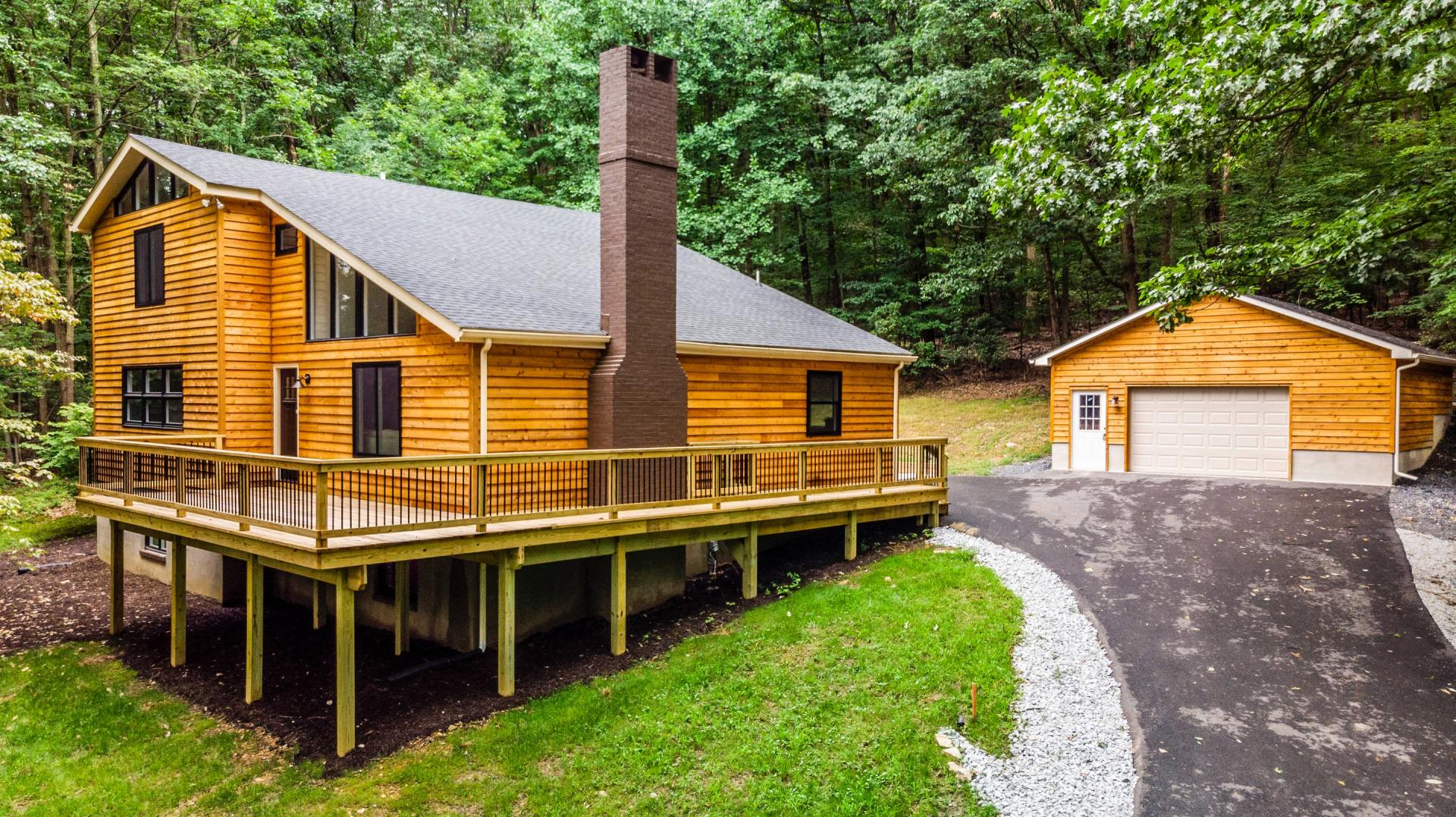
First Inspection (twice a year)
There are things you inspect in the spring and things for the fall.
Inspection Spring/Fall
- Starting on the south side of the log home do a perimeter walk looking over areas that suffer from extremes of temperature.
- Watch out for cracking molds or infestations.
- Be sure to check around door windows and log ends.
- Check the roof for missing or loose tiles or shingles.
- Look at flashings around pipes and chimneys
- Check gutters for blockages and signs of leakage
- Inspect the walls for cracking and new crevasses because of settling
- Use a spray bottle to check the stains for needing renewing. look if the knots are looking blond. The sealant is good when the water will bead up and run off.
- Look for signs of mold or holes in your logs, around areas where backsplash could be happening.
- Make sure all vegetation is 24” from the home.
- Check the hand railings and porch is secure.
- Do not allow any standing water near the home.
If you need a certified log home inspector or
log home inspection, visit
lhrca.com
Wash the exterior of the log home (Yearly)
Using a mild detergent and a soft brush, wash the exterior of your log home once a year. This will help remove things like dirt, pollution, mold, mildew, bird feces, and insect remnants.
When washing work from the bottom to the top then back down. This will keep the dirt from redepositing on the logs. Give extra attention to darker areas. If the water is being absorbed by the logs that is a sign that the stain is bad You should look at renewing your stain. Wait 3 to 5 days for the logs to dry before you look at restaining.
Removal or renewing of log home stains
If you find areas where the old stain no longer repels water or is heavily layered it will be necessary to restain the log home. If the old layers are discoloring and thick, it may be time to remove the old stain.
There are 3 ways to remove old stains.
- Mechanical removal using wire brushes and sandpaper. This is a time consuming and exhausting method. There are some wire brushes available for your drill or grinder that can speed the process. Warning! These power brushes can cause damage to logs if not applied. Please contact a professional before doing yourself.
- Chemical solvent to soften the stain. You will deal with caustic chemicals for most parts. This does not remove the stain, just makes it soft enough for a pressure washer to peel the stain from the logs. Warning! Do not exceed 50 PSI and keep the tip at least 18 inches from the logs and have it angled. Otherwise you can force water into the logs, which can lead to wood rot.
- Media blasting, this takes expensive equipment that you must buy or rent. There are several choices on what type of media to use. Inorganic such as glass or sand, can strip the stain, but leave a deposit at the base of your cabin that will not go away.
Organic media such as corn husk or walnut shell is well respected. Corn husk has a problem with leaving organic particles impressed into the logs, leading to mold and other problems. Walnut shell appears to be the preferred media to professionals. The shells are hard enough to do an outstanding job and still biodegrade when finished.
Media blasting again can cause damage to your logs that a professional will have to come in and repair. This can cost more than the actual media blasting.
After removing the old stain, you must wash the logs to get rid of residual chemicals or sawdust.
Reapplying stain to your log home.
There are three basic types of log home stains. Oil Based, Latex Based, and a Hybrid of Oil and Latex. With oil based stains you look at the knots on the logs if they are looking blond it is time to add another coat. If you have latex stains, looking dull and faded shows you need another coat. Oil based stains are best in high moisture areas. Latex is best in high sun and low moisture areas.
When you apply stains, it is a 2 coat process with wet on wet application. Spray on the first coat and then wait 20 minutes and brush or roll on a second coat.
Make sure the area to be stained is both clean and dry. If you have washed the logs give them 3 to 5 days to dry. Most stains can be sprayed on with a garden sprayer. This is easy to accomplish by a do it yourself. Remember after the spray, wait 20 minutes and use a roller to push the stain into the wood. Work horizontally and in small areas so you have time to get back to the stain in time. Back rolling provides a professional appearance.
It is highly recommended that you include an insect repellant additive to your chosen stain.
If you need a professional log home restoration professional contact
LHRCA.com
Sealing the log home (Annually)
One fact of life with log home is that logs shrink as they age from the loss of moisture. This causes effects from actual shrinkage of the wall height to cracks in the logs and the pulling away from the sealant used between the logs.
For smaller fissures that appear in the logs, caulking would be a good general response. For cracks over ½ inch we would suggest backer bars and chinking compound. If the chinking is pulling away from the logs it may be time to remove the old chinking and use new backing rods or strips along with new chinking compound.
This is important since cracks and bad chinking can lead to water getting to unprotected logs and lead to wood rot.
Check the sealing around all dolmans and flashings, as well around all doors and windows. Proper sealing will save you in heating and cooling year round.
Log Replacement or Repair
If when you are inspecting you discover signs of wood rot, contact an expert. This is the repair no one not well versed in log home construction and restoration should ever attempt.
The contractor will establish how much the rot has spread and whether a ½ depth or full depth log replacement will be required. He will have to locate proper logs to match your existing logs. You may face major structural damage depending on the site of the rot. This is not something you should try to do yourself. Log replacement or repair is expensive. Ensure that you maintain proper maintenance to prevent this failure.
Pest Control (Annually)
Besides the normal household pest such as ants, roaches, mice and other similar vermin, log homes have some unique pests.
Carpenter Ants and Bees
These pests bore into a log and then hollow out a log to build a nest. Outwards there are only small signs of an infestation. Most common besides finding a hole about ½ inch across is sawdust at the bottom of a wall. The carpenter ants and bees can cause an enormous amount of damage will little sign.
Termites
If your log home does not have at least 12 inches of foundation, the chances of getting termites is large. Even with foundations, you need to look for mud tunnels running up the foundations. These are pencil thickness. Termites will require tenting and professional repair service.
Rodents
Many rodents will gnaw through wood to get to food inside of your log homes. Making nests in basements, walls, attics.
Woodpeckers
Woodpeckers are one of the most annoying pests, they may look for insects and lavas or just being territorial and not wanting your log home in their area.
Maintenance (Annually)
Gutters
Cleaning and maintaining your gutter is one of the vital yearly maintenance activities. If you do not keep them clean and working water will build up in storms and the drain down the walls. This can result in wood rot.
Gaps around doors and windows.
The log shrinkage can lead to gaps around doors and windows. Expanding foam can take care of smaller gaps. If the gap is big, get your contractor in to repair it before the next storm hits.
Conclusion
Only regular and comprehensive maintenance can save you from some major repairs.
Log Home Restoration of California
Log Home Restorations of California Inc. has decades of experience inspecting repairing and building log homes. In everything from building new log homes to repairing the old log cabin, LHRCA has the skills you need.
Our experts guarantee that you will be happy with our work.
